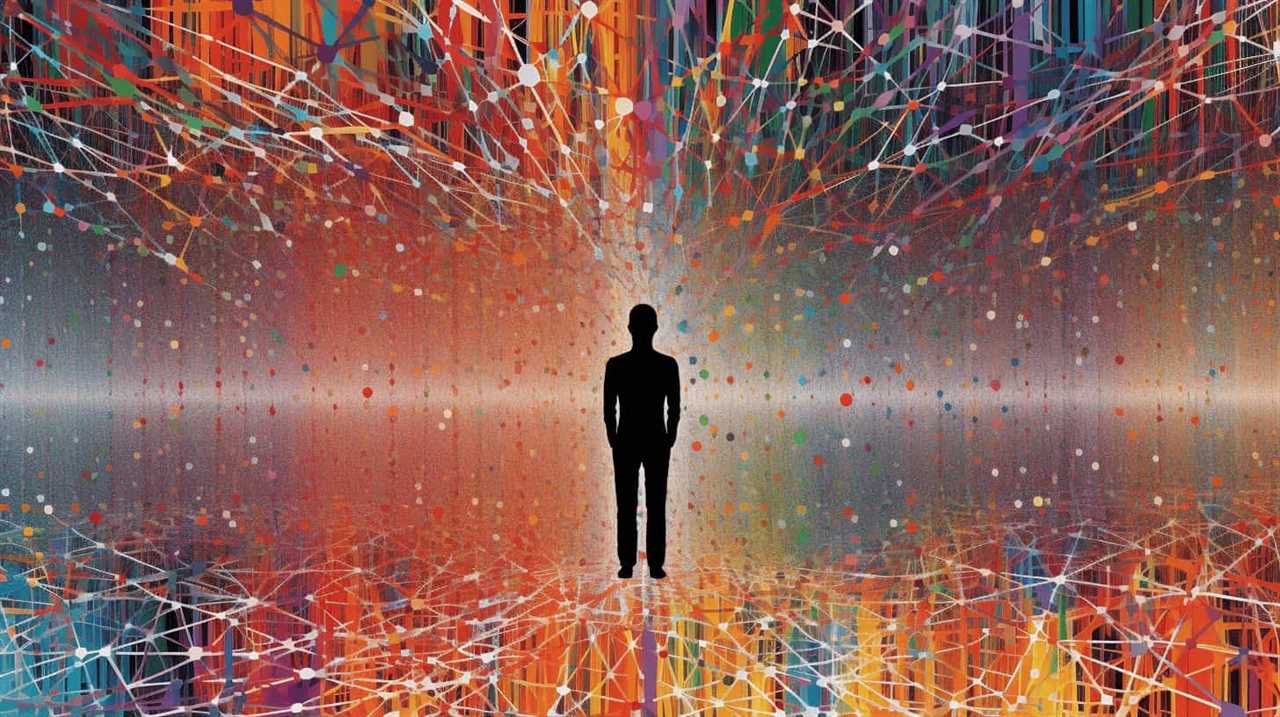Tech
Deep Learning: AI’s Secret Sauce Unveiled
Prepare to be amazed, everyone, as we delve into the world of deep learning. Today, we uncover the crucial element behind AI’s remarkable capabilities.
Brace yourselves for a journey through the intricacies of neural networks, where convolutional and recurrent models dance harmoniously, while generative adversarial networks push the boundaries of innovation.
Get ready to witness the power of deep learning as we unravel its mysteries and unlock the potential for groundbreaking advancements in artificial intelligence.
Key Takeaways
- Transfer learning allows models to leverage knowledge from one task for another.
- Deep learning techniques revolutionize the field of AI.
- Convolutional Neural Networks (CNN) are designed for image recognition tasks.
- Generative Adversarial Networks (GAN) are a framework for training generative models.
Overview of Deep Learning Techniques
In this section, we’ll be exploring the various deep learning techniques that are revolutionizing the field of AI.

One of the key techniques that has gained significant attention is transfer learning. This approach allows a model to leverage knowledge gained from one task and apply it to another related task. By transferring the learned features, the model can achieve better performance with less training data.
Another important technique is unsupervised learning, which enables the model to learn patterns and relationships in data without explicit labels. This technique is particularly valuable when labeled data is scarce or expensive to obtain. Unsupervised learning algorithms, such as autoencoders and generative adversarial networks, have shown great promise in tasks like anomaly detection and data generation.
Now, let’s delve into the world of neural networks and deep learning, where these techniques truly shine.
Neural Networks and Deep Learning
Let’s dive into the world of neural networks and uncover the power of deep learning.

Neural networks are at the heart of deep learning, enabling machines to learn and make decisions similar to humans. These networks are composed of interconnected nodes, called neurons, which process and transmit information.
Deep learning, powered by neural networks, has found many applications across various industries. It has revolutionized image and speech recognition, natural language processing, and recommendation systems. Deep learning models have also achieved remarkable results in medical diagnosis, autonomous vehicles, and financial forecasting.
However, neural networks do have limitations. They require large amounts of labeled data for training, and they can be computationally expensive and time-consuming. Additionally, neural networks are often considered black boxes, making it challenging to interpret their decisions.
Despite these limitations, the applications of deep learning continue to expand, driving innovation and pushing the boundaries of artificial intelligence.

Convolutional Neural Networks (CNN)
We will now explore the power of Convolutional Neural Networks (CNN) in the world of deep learning. CNNs are a type of neural network specifically designed for image recognition tasks. They excel at extracting features from raw pixel data and have revolutionized the field of computer vision. One of the key strengths of CNNs is their ability to automatically learn and identify meaningful patterns in images through a process called feature extraction. This process involves applying multiple convolutional filters to the input image, which then detect different features such as edges, textures, and shapes. These extracted features are then used by the network to classify and recognize objects within the image. CNNs have proven to be highly effective in various applications such as facial recognition, object detection, and autonomous driving.
| Advantages | Limitations |
|---|---|
| Excellent performance in image recognition tasks | Requires large amounts of labeled training data |
| Automatically learns and extracts meaningful features | Computationally expensive |
| Can handle complex and high-dimensional data | Interpretability can be challenging |
Recurrent Neural Networks (RNN)
Recurrent Neural Networks (RNN) provide a powerful framework for understanding and analyzing sequential data. One popular type of RNN is the Long Short Term Memory (LSTM) network, which addresses the vanishing gradient problem and allows for better modeling of long-term dependencies in the data.
The applications of RNN in Natural Language Processing (NLP) are vast. RNNs can be used for tasks such as language translation, sentiment analysis, and text generation. By processing text data sequentially, RNNs can capture the contextual information necessary for these tasks.
Moreover, RNNs can also be applied to speech recognition and handwriting recognition. With their ability to handle sequential data, RNNs have revolutionized the field of NLP and opened up new possibilities for AI-driven language processing.

Moving forward, let’s explore another exciting topic: generative adversarial networks (GAN).
Generative Adversarial Networks (GAN)
To delve deeper into the realm of AI, we now shift our attention to the innovative concept of Generative Adversarial Networks (GAN). GANs are a powerful framework for training generative models. They consist of two components: a generator and a discriminator.
The generator learns to produce data that resembles the training set, while the discriminator learns to distinguish between real and generated data. GANs have found various applications in image synthesis, text generation, and voice conversion, among others.
One of the key advantages of GANs is their ability to learn from unlabeled data, making them particularly useful in scenarios where labeled data is scarce. GAN training techniques, such as adversarial training and gradient-based optimization, have been developed to train these models effectively.

GANs are a promising area of research in AI and hold great potential for innovation in various domains.
Frequently Asked Questions
How Does Deep Learning Differ From Other Machine Learning Techniques?
Deep learning differs from other machine learning techniques by using neural networks to learn and make predictions. It can handle complex tasks like image and speech recognition, and has real world applications in self-driving cars and virtual assistants.
What Are the Main Challenges in Training Deep Neural Networks?
Training deep neural networks presents challenges due to data scarcity and computational complexity. These hurdles require innovative solutions to optimize performance and overcome limitations, pushing the boundaries of what AI can achieve.
Can Deep Learning Models Be Easily Interpretable or Explainable?
Deep learning models, although powerful, are not easily interpretable or explainable. This lack of interpretability poses limitations and challenges in understanding the inner workings and decision-making processes of these models.

How Does the Size of the Training Dataset Affect the Performance of Deep Learning Models?
The size of the training dataset greatly affects the performance of deep learning models. With data scarcity, models may suffer from overfitting, reducing their ability to generalize to new data.
Are There Any Ethical Concerns Associated With the Use of Deep Learning in AI Applications?
Ethical implications arise from the use of deep learning in AI applications, impacting society in various ways. It is crucial to consider the potential biases, privacy concerns, and job displacement associated with this powerful technology.
Conclusion
In conclusion, deep learning techniques have revealed the secret sauce of artificial intelligence. Neural networks, such as Convolutional Neural Networks and Recurrent Neural Networks, have played a crucial role in achieving remarkable results.
However, let’s not forget the power of irony in this context. While these advancements may seem impressive, they also raise important questions about the future of human intelligence and our reliance on machines.

Hanna is the Editor in Chief at AI Smasher and is deeply passionate about AI and technology journalism. With a computer science background and a talent for storytelling, she effectively communicates complex AI topics to a broad audience. Committed to high editorial standards, Hanna also mentors young tech journalists. Outside her role, she stays updated in the AI field by attending conferences and engaging in think tanks. Hanna is open to connections.
Tech
Curated Insights: Latest Breakthroughs in Machine Learning Tech

We have explored the cutting-edge field of machine learning to bring you the most remarkable technological advancements.
Our curated insights will enlighten and excite as we delve into the latest advancements in deep learning algorithms, emerging applications, data analysis techniques, natural language processing trends, and innovative computer vision and image recognition.
Prepare to be amazed by the limitless possibilities and groundbreaking discoveries that await in the ever-evolving world of machine learning tech.
Key Takeaways
- Real-time fraud detection and anomaly detection for fraud prevention are crucial applications of machine learning in various industries.
- Transfer learning techniques and reinforcement learning algorithms have led to significant advancements in deep learning algorithms, with applications in robotics and game playing.
- Cutting-edge techniques for data analysis, such as real-time predictions and insights, have enhanced decision-making processes and enabled proactive measures based on data analysis.
- Natural language processing has seen advancements in sentiment analysis, language translation models, and understanding human emotions in text, providing valuable insights for businesses.
Emerging Applications of Machine Learning
In our article, we explore the emerging applications of machine learning, focusing on how this technology is transforming various industries.

One such application is real-time fraud detection. Machine learning algorithms can analyze vast amounts of data in real-time, identifying patterns and anomalies that may indicate fraudulent activity. By continuously learning from new data, these systems can adapt and improve their accuracy over time, helping businesses detect and prevent fraud more effectively.
Another exciting application is personalized recommendation systems. Machine learning algorithms can analyze user behavior, preferences, and historical data to provide personalized recommendations for products, services, or content. These recommendations can enhance user experience, increase customer satisfaction, and drive sales.
Advancements in Deep Learning Algorithms
With the advent of new technologies and the increasing availability of large datasets, we’re witnessing remarkable advancements in the capabilities of deep learning algorithms.
Transfer learning techniques have emerged as a powerful tool in deep learning, allowing models to leverage knowledge learned from one task and apply it to another, even in different domains. This approach reduces the need for training from scratch and enables faster convergence and improved performance.

Additionally, reinforcement learning algorithms have made significant progress in solving complex problems by learning through interactions with an environment. These algorithms use trial and error to optimize decision-making processes, leading to breakthroughs in areas such as robotics and game playing.
As deep learning continues to evolve, these advancements pave the way for cutting-edge techniques in data analysis, enabling us to extract valuable insights from vast amounts of information.
Cutting-Edge Techniques for Data Analysis
As we delve into the realm of cutting-edge techniques for data analysis, our exploration of advancements in machine learning continues to uncover new and exciting possibilities.
One such possibility is the ability to make real-time predictions and detect anomalies in data. Real-time predictions refer to the capability of providing immediate insights and actionable information as new data streams in. This is particularly valuable in industries where timely decision-making is crucial, such as finance or healthcare.

Anomaly detection, on the other hand, focuses on identifying patterns or events that deviate significantly from the norm. By leveraging machine learning algorithms, data analysts can now identify anomalies that may indicate potential fraud, system failures, or other critical issues. These cutting-edge techniques not only enhance decision-making processes but also allow for proactive measures to be taken.
Moving forward, let’s explore the latest trends in natural language processing and how they’re revolutionizing the way we interact with machines.
Latest Trends in Natural Language Processing
Continuing our exploration of cutting-edge techniques for data analysis, we now turn our attention to the latest trends in natural language processing, revolutionizing the way we interact with machines.
In recent years, significant advancements have been made in sentiment analysis, allowing machines to understand and interpret human emotions expressed in text. By analyzing the sentiment behind customer reviews, social media posts, and other textual data, businesses can gain valuable insights into customer satisfaction and make informed decisions to improve their products or services.

Additionally, language translation has seen remarkable enhancements, with the development of neural machine translation models that outperform traditional statistical approaches. These models utilize deep learning algorithms to capture the semantic meaning of sentences, resulting in more accurate and fluent translations.
As we delve into innovations in computer vision and image recognition, we witness a fascinating convergence of technology, where machines can’t only understand our words but also perceive and interpret visual information.
Innovations in Computer Vision and Image Recognition
We explore the exciting realm of computer vision and image recognition, where machines can now not only understand our words but also perceive and interpret visual information. This field is witnessing remarkable advancements that have the potential to revolutionize various industries.
Here are some of the latest breakthroughs:

-
Object Detection: Computer vision algorithms are becoming highly accurate in detecting and localizing objects in images and videos. This is crucial for applications such as surveillance systems and autonomous vehicles.
-
Image Segmentation: Advanced techniques are enabling machines to segment images into different regions, allowing for more precise analysis. This can be valuable in medical imaging for identifying tumors or in robotics for object manipulation.
-
Scene Understanding: With the ability to recognize scenes and understand the context, computer vision systems can now assist in tasks like navigation for autonomous vehicles or guiding robots in complex environments.
-
Deep Learning: The utilization of deep neural networks has significantly improved the accuracy and efficiency of computer vision algorithms, opening up new possibilities for advanced robotics and autonomous vehicles.

These developments in computer vision and image recognition hold great promise for industries seeking innovation in areas like advanced robotics and autonomous vehicles. By leveraging these technologies, we can enable machines to perceive and understand visual information, leading to safer and more efficient systems.
Frequently Asked Questions
How Does Machine Learning Technology Impact the Healthcare Industry?
Machine learning technology positively impacts the healthcare industry through predictive analytics and personalized medicine. It enables us to analyze vast amounts of data, identify patterns, and make accurate predictions, revolutionizing patient care and treatment outcomes.
What Are the Ethical Considerations Associated With the Use of Deep Learning Algorithms?
When it comes to the ethical considerations of deep learning algorithms, privacy concerns and bias detection are at the forefront. We must address these issues to ensure the responsible and unbiased use of this powerful technology.
How Can Machine Learning Techniques Be Applied to Improve Cybersecurity?
Machine learning techniques can greatly enhance cybersecurity by enabling advanced malware detection and anomaly detection. These innovations offer a proactive approach to identifying and mitigating cyber threats, leading to improved overall security.

What Are the Challenges in Implementing Natural Language Processing in Real-Time Conversational Systems?
Implementing natural language processing in real-time conversational systems presents challenges such as processing speed, accuracy, and understanding context. These challenges hinder effective implementation and require continuous research and innovation in machine learning technology.
How Can Computer Vision and Image Recognition Be Used to Enhance Autonomous Vehicles?
Computer vision and image recognition are revolutionizing autonomous vehicles. By applying these technologies, we can enhance safety, improve object detection, and enable advanced navigation systems. Computer vision also finds applications in agriculture and image recognition benefits the retail industry.
Conclusion
In conclusion, the latest breakthroughs in machine learning technology have opened up exciting possibilities for various applications.
The advancements in deep learning algorithms have allowed for more accurate and efficient analysis of complex data.

Cutting-edge techniques for data analysis have revolutionized the way we extract insights from large datasets.
The latest trends in natural language processing have made significant progress in understanding and generating human language.
Innovations in computer vision and image recognition have improved our ability to analyze and interpret visual content.
These advancements are propelling the field of machine learning towards new frontiers of innovation and discovery.

Hanna is the Editor in Chief at AI Smasher and is deeply passionate about AI and technology journalism. With a computer science background and a talent for storytelling, she effectively communicates complex AI topics to a broad audience. Committed to high editorial standards, Hanna also mentors young tech journalists. Outside her role, she stays updated in the AI field by attending conferences and engaging in think tanks. Hanna is open to connections.
Tech
Website Hijackers Manipulate Google Search Results

Dear audience, prepare to be astonished. This informative article will delve into the specific strategies employed by website hijackers to manipulate Google search results.
Brace yourselves for a journey into the dark corners of the internet, where hackers exploit vulnerabilities in popular platforms like WordPress.
As we delve deeper, we will shed light on the devastating consequences faced by website owners and users alike.
Get ready to break free from ignorance and discover the shocking truth behind website hijacking.

Key Takeaways
- Hackers compromise websites, particularly those using the open-source version of WordPress, to gain access through the administrator login.
- Injected links are added by hackers to manipulate search engine results, improving rankings and attracting more traffic to customer websites.
- Website owners may suffer financial loss and damage to their reputation, while users may be exposed to inappropriate or malicious content.
- Search engines like Google are manipulated by shady digital marketers and hackers through tactics such as acquiring once-credible websites and launching manipulation campaigns.
Methods Used by Website Hijackers
Website hijackers employ various tactics to manipulate search engine results and gain unauthorized access to websites. These hackers often target websites that use the open-source version of WordPress, taking advantage of vulnerabilities in outdated installations and plugins.
By compromising the administrator login, they can inject links into the website to manipulate search engine rankings. These injected links are then sold through online marketplaces, allowing the hijackers to profit from their illicit activities.
The impact on website owners and users can be significant, with financial loss, damage to reputation, and exposure to inappropriate or malicious content.
To prevent website hijacking, website owners should take preventive measures such as keeping their WordPress installations and plugins up to date, using strong passwords, and implementing security plugins.

Regular security audits and monitoring can also help detect and prevent unauthorized access.
Impact on Website Owners and Users
As website owners and users, we’re greatly affected by the impact of injected links and website hijacking.
One of the major consequences we face is the financial loss resulting from website hijacking. When hackers manipulate search engine results by injecting unauthorized backlinks, it can lead to a decrease in website traffic and potential customers, ultimately impacting our revenue.
Moreover, website hijacking can also damage our reputation, as users may be exposed to inappropriate or malicious content.

To prevent website hijacking, we must employ effective strategies. Regularly updating and patching our website’s software, especially if we’re using open-source platforms like WordPress, is crucial.
Additionally, implementing strong security measures such as two-factor authentication, using reputable plugins, and conducting regular security audits can help safeguard our websites from potential attacks.
Examples of Websites Affected by Injected Links
We have observed various websites, including those of lifestyle blogger Molly Stillman and the Canadian urban magazine Spacing, being impacted by injected links. Molly Stillman discovered unauthorized links on her blog, while Spacing found unauthorized links added to their articles. These examples highlight the vulnerability of websites to injected links and the need for strategies to prevent them.
To prevent injected links on websites, website owners should regularly update their content management systems, plugins, and themes to the latest versions to mitigate potential vulnerabilities. Implementing strong passwords and enabling two-factor authentication for administrator logins can also help minimize the risk of unauthorized access. Additionally, monitoring website traffic and regularly scanning for malware can help detect and address any injected links promptly.

The Role of Search Engines in Link Manipulation
To understand the impact of injected links, it’s important to examine the role that search engines play in link manipulation.
Hackers employ various strategies to manipulate search engine results, such as acquiring once-credible websites and launching manipulation campaigns. They also use fake online personas to make content appear higher in search results.
However, search engines like Google have implemented countermeasures to prevent link manipulation. Google’s quality guidelines explicitly forbid link schemes and buying links, although the global trade in links continues to thrive.
Search engines actively work to identify and penalize websites engaging in link manipulation tactics. They use complex algorithms and machine learning techniques to detect and filter out manipulated links, aiming to provide users with accurate and relevant search results.

Sape.Ru as a Major Source of Injected Links
The prevalence of injected links in manipulated search results highlights Sape.ru’s significant role as a major source of these deceptive tactics. Sape.ru is an online marketplace where black hat marketers and webmasters post search-ranking data.
With over 8,000 English-language websites listed on Sape, it has been confirmed that injected links have appeared on sites advertised through this platform. Sape claims to block accounts of confirmed hackers and those unable to verify site ownership, making efforts to prevent bad actors from using their system.
However, it’s essential to assess the effectiveness of Sape.ru in blocking hackers and verifying site ownership to ensure the integrity of search results. By implementing robust measures and continuously monitoring their platform, Sape.ru can play a crucial role in preventing the proliferation of injected links and protecting website owners and users from the negative consequences of these deceptive tactics.
Frequently Asked Questions
How Do Hackers Gain Access to Websites and Manipulate Search Engine Results?
Hackers gain access to websites and manipulate search engine results through various methods. They exploit vulnerabilities in popular platforms like WordPress, targeting outdated installations and vulnerable plug-ins. By compromising the website’s administrator login, they inject unauthorized links to manipulate search rankings.

These injected links are often sold through online marketplaces. Website owners face financial loss and damage to their reputation, while users are exposed to inappropriate or malicious content.
Preventing website hijacking involves regularly updating and securing website platforms and plug-ins.
What Are the Potential Consequences for Website Owners and Users When Their Websites Are Hijacked?
Potential long term effects and impact on a website’s reputation can be significant when it falls victim to hijacking. Financial loss, damage to credibility, and loss of user trust are just a few consequences.
Users may be exposed to inappropriate or malicious content, leading to a decline in traffic and engagement. Furthermore, the reputation of website owners can suffer, making it difficult to regain trust.

It’s crucial for website owners to invest in robust security measures to protect against hijacking and mitigate these potential consequences.
Can You Provide Specific Examples of Websites That Have Been Affected by Injected Links?
Examples of websites affected by injected links include:
- Molly Stillman’s lifestyle blog, where unauthorized links were discovered.
- The Canadian urban magazine, Spacing, which found injected links added to their articles.
Media sites and major news sites have also been targeted for injected links. Expired domains and once-credible websites are acquired and filled with junk content to manipulate search engine rankings.
To prevent link manipulation, website owners should:

- Regularly update their WordPress installations and plugins.
- Use strong passwords.
- Monitor their site for any suspicious activity.
How Do Search Engines Like Google Contribute to Link Manipulation and What Measures Do They Take to Prevent It?
Search engines like Google contribute to link manipulation by being manipulated by shady digital marketers and hackers. They’re often targeted because of their algorithms’ influence on search rankings and website visibility.
To prevent link manipulation, Google has implemented measures such as forbidding link schemes and buying links in their quality guidelines. They also utilize artificial intelligence to detect and prevent manipulation tactics, such as acquiring once-credible websites and using fake online personas.
These measures are crucial in maintaining user trust and ensuring the integrity of search engine results.
What Is Sape.Ru and How Does It Play a Role in the Distribution of Injected Links?
Sape.ru, a major player in website hijacking, plays a crucial role in the distribution of injected links. With over 8,000 English-language websites listed on Sape, it provides a marketplace for black hat marketers and webmasters to post search-ranking data.

Sape utilizes various strategies to inject links, such as acquiring once-credible websites and launching manipulation campaigns. Despite claiming to block accounts of confirmed hackers, Sape continues to be a hub for link manipulation, contributing to the ongoing battle against website hijackers.
Conclusion
In conclusion, the website hijacking epidemic continues to plague website owners and users alike. Like a relentless storm, hackers find ways to compromise websites, injecting links to manipulate search engine results and deceive unsuspecting visitors. The consequences are devastating, causing financial loss and damage to reputation.
Despite efforts by search engines to combat link manipulation, the trade in links thrives, with Sape.ru serving as a major source. This ongoing battle requires constant vigilance and proactive measures to protect online integrity.
Hanna is the Editor in Chief at AI Smasher and is deeply passionate about AI and technology journalism. With a computer science background and a talent for storytelling, she effectively communicates complex AI topics to a broad audience. Committed to high editorial standards, Hanna also mentors young tech journalists. Outside her role, she stays updated in the AI field by attending conferences and engaging in think tanks. Hanna is open to connections.
Tech
AI’s Influence: Privacy Protection or Regulatory Nightmare?

As we delve into the expanding realm of artificial intelligence, we encounter a landscape that brings forth paradoxes.
On one hand, AI promises to protect our privacy, but on the other, it poses a potential regulatory nightmare.
This juxtaposition of privacy protection and regulatory challenges demands our attention.
In this article, we delve into the ethical implications of AI’s influence, exploring the delicate balance between innovation and privacy protection, and the pressing need for ethical AI regulations in this era of rapid technological advancement.

Key Takeaways
- AI algorithms can perpetuate biases and lead to discriminatory outcomes, highlighting the need for ethical frameworks and guidelines.
- The privacy risks of AI technology include data breaches, intrusion on privacy through surveillance systems, lack of transparency, and perpetuation of unfair outcomes.
- Regulatory challenges in the era of AI involve data governance, algorithmic bias detection, balancing innovation and privacy protection, and fostering privacy awareness and accountability.
- Balancing innovation with privacy protection requires robust data security measures, clear guidelines for data collection and usage, regular privacy risk assessments, and promoting privacy awareness among employees.
The Growing Concerns About AI Ethics
We share deep concerns about the ethical implications of AI as it continues to proliferate in our society. One of the key issues we must address is AI bias and discrimination. As AI algorithms are trained on vast amounts of data, they can inadvertently perpetuate biases present in that data, leading to discriminatory outcomes. This raises important questions about accountability in AI decision-making. Who should be held responsible for the actions and decisions made by AI systems? How can we ensure transparency and fairness in their operation?
These are complex challenges that require careful consideration and innovative solutions. As we explore the potential of AI, we must prioritize the development of ethical frameworks and guidelines to mitigate these risks.
Now, let’s delve into the next section, where we’ll discuss the privacy risks associated with AI technology.
Privacy Risks Associated With AI Technology
Continuing from our previous discussion on AI ethics, let’s now delve into the privacy risks associated with AI technology.

As AI becomes more prevalent in our daily lives, it brings with it certain concerns regarding the protection of our personal data. Here are some of the key risks:
-
Data breaches: With the increasing amount of data being collected and analyzed by AI systems, the risk of data breaches becomes a major concern. These breaches can result in the unauthorized access, use, or disclosure of sensitive information, leading to potential harm to individuals and organizations.
-
Surveillance technology: AI-powered surveillance systems have the potential to intrude on our privacy by capturing and analyzing vast amounts of personal data, such as facial recognition and location tracking. This raises questions about the balance between security and privacy, as well as the potential for misuse of surveillance technology.
-
Lack of transparency: AI algorithms often operate as black boxes, making it difficult for individuals to understand how their data is being used and who’s access to it. This lack of transparency can erode trust and hinder individuals’ ability to make informed decisions about their privacy.

-
Discrimination and bias: AI systems are only as good as the data they’re trained on. If the data used to train these systems is biased or discriminatory, it can perpetuate and amplify existing biases, leading to unfair or discriminatory outcomes.
It is crucial to address these privacy risks associated with AI technology to ensure that the benefits of AI can be realized without compromising individuals’ privacy rights.
Regulatory Challenges in the Era of AI
As we explore the regulatory challenges in the era of AI, it’s essential to address the potential impact on privacy rights and ensure adequate protection for individuals’ personal data.
One of the key challenges that arise in this context is data governance. With the increasing use of AI, enormous amounts of data are being collected, stored, and processed. It’s crucial to establish robust frameworks and regulations to govern the collection, storage, and usage of this data to prevent any misuse or unauthorized access.

Additionally, algorithmic bias is another significant concern that needs to be addressed. AI systems rely on algorithms that can inadvertently perpetuate biases and discrimination. Developing mechanisms to detect and mitigate algorithmic bias is crucial to ensure fairness and equal treatment in AI-powered decision-making processes.
Balancing Innovation With Privacy Protection
To strike a balance between innovation and privacy protection, it’s crucial for organizations to regularly assess and update their data governance frameworks and regulations. This ensures that they keep up with the rapid pace of technological advancements while also prioritizing data security.
Here are some key considerations for organizations seeking to balance innovation and privacy protection:
- Implement robust encryption and authentication measures to safeguard sensitive data.
- Develop clear guidelines for data collection, storage, and usage to ensure compliance with privacy regulations.
- Conduct regular audits and assessments to identify and address potential privacy risks.
- Foster a culture of privacy awareness and accountability among employees to minimize the risk of data breaches.
The Need for Ethical AI Regulations
We believe that for effective AI implementation, organizations must establish clear and enforceable regulations regarding ethical AI practices.

As AI continues to advance and become more integrated into our daily lives, it’s crucial that ethical considerations and societal impact are taken into account.
The potential for AI to greatly benefit society is undeniable, but it also poses potential risks if not properly regulated.
Ethical AI regulations can ensure that AI systems are developed and used in a responsible manner, with a focus on transparency, fairness, and accountability.
These regulations can address concerns such as biases in AI algorithms, data privacy, and the potential displacement of jobs.

Frequently Asked Questions
What Are Some Specific Examples of Privacy Risks Associated With AI Technology?
Data breaches and algorithmic bias are specific examples of privacy risks associated with AI technology. We must address these concerns to protect personal information and ensure fairness in the use of AI algorithms.
How Do Existing Regulations Address the Ethical Concerns Raised by Ai?
Existing regulations are not fully equipped to address the ethical concerns raised by AI. We need new regulations that strike a balance between protecting privacy and fostering innovation in order to navigate this complex landscape effectively.
What Are Some Instances Where Innovation Is Prioritized Over Privacy Protection in the Context of Ai?
In some instances, innovation incentives may outweigh privacy protection in the realm of AI. This can lead to potential data exploitation, as companies prioritize advancements over safeguarding personal information.
Are There Any Existing Frameworks or Guidelines for Ethical AI Regulations?
There are numerous challenges in AI regulation, including the need for ethical frameworks. These frameworks help navigate the complex landscape of AI development and ensure innovation while protecting privacy and maintaining ethical guidelines.

What Are Some Potential Consequences of Not Having Proper Regulations in Place for AI Technology?
Not having proper regulations in place for AI technology can have severe consequences. The ethical implications and societal impact of unregulated AI can lead to privacy breaches, discriminatory practices, and an erosion of trust in technology.
Conclusion
In conclusion, as AI continues to permeate our lives, the need for ethical regulations becomes increasingly apparent. While innovation should be encouraged, it mustn’t come at the cost of privacy and ethical concerns.
Striking a balance between technological advancements and privacy protection is crucial. By addressing the growing concerns about AI ethics, identifying privacy risks, and overcoming regulatory challenges, we can ensure that AI’s influence is characterized by responsible and ethical practices.
Hanna is the Editor in Chief at AI Smasher and is deeply passionate about AI and technology journalism. With a computer science background and a talent for storytelling, she effectively communicates complex AI topics to a broad audience. Committed to high editorial standards, Hanna also mentors young tech journalists. Outside her role, she stays updated in the AI field by attending conferences and engaging in think tanks. Hanna is open to connections.
-

 AI News4 weeks ago
AI News4 weeks agoAI-Assisted Grant Writing: Improving Success Rates for Educational Institutions
-

 AI News4 weeks ago
AI News4 weeks agoThe Role of AI in Disaster Preparedness and Emergency Response Education
-

 AI News4 weeks ago
AI News4 weeks agoThe Impact of AI on Privacy Laws and Regulations
-

 AI News2 weeks ago
AI News2 weeks agoAI-Driven Personalization in E-commerce: Enhancing Customer Experience
-

 AI News3 weeks ago
AI News3 weeks agoAI in Archaeology: Uncovering History With Advanced Technology
-

 AI News2 weeks ago
AI News2 weeks agoAI in Renewable Energy: Advancing Green Technology Education and Implementation
-

 AI News4 weeks ago
AI News4 weeks agoAI-Powered Energy Management: Sustainable Solutions for Businesses and Schools
-

 AI News3 weeks ago
AI News3 weeks agoAI in Library Sciences: Transforming Information Management and Access













